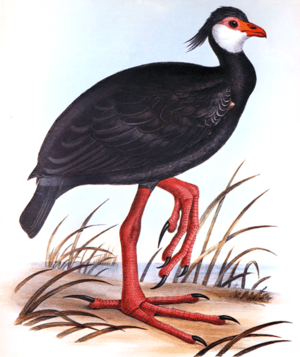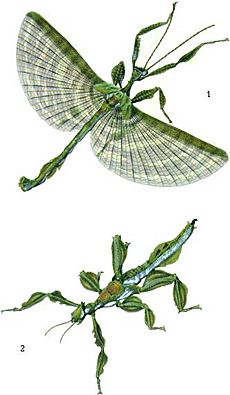George Robert Gray facts for kids
Quick facts for kids
George Robert Gray
|
|
|---|---|
| Born | 8 July 1808 Little Chelsea, London, England
|
| Died | 6 May 1872 (aged 63) |
| Known for | Genera of Birds, description of many species of Lepidoptera |
| Parent(s) | Samuel Frederick Gray Elizabeth Forfeit |
| Relatives | John Edward Gray (brother) |
| Scientific career | |
| Fields | Ornithologist, entomologist |
| Institutions | British Museum |
| Author abbrev. (zoology) | G. R. Gray |

George Robert Gray (born July 8, 1808 – died May 6, 1872) was an English zoologist and writer. A zoologist is a scientist who studies animals. For 41 years, he was in charge of the bird section at the British Museum in London. Today, this museum is known as the Natural History Museum.
George was the younger brother of another zoologist, John Edward Gray. Their father, Samuel Frederick Gray, was a botanist, someone who studies plants.
George Gray's most important book was Genera of Birds (published between 1844 and 1849). It was filled with amazing drawings by David William Mitchell and Joseph Wolf. This huge book included 46,000 references to different birds!
About George Robert Gray

George Robert Gray was born in Little Chelsea, a part of London. His father, Samuel Frederick Gray, was a naturalist and also studied medicines. George went to school at Merchant Taylor's School.
In 1831, George Gray started working at the British Museum. He became an Assistant Keeper in the Zoology Branch. This meant he helped manage the animal collections.
Studying Insects
Gray began his work by organizing and listing insects. He wrote a book called Entomology of Australia in 1833. Entomology is the study of insects. He also helped write the insect part of an English version of a famous book by Georges Cuvier, called Animal Kingdom.
George Gray discovered and described many new species of Lepidoptera. Lepidoptera are a group of insects that includes butterflies and moths.
In 1833, he helped start a group that is now known as the Royal Entomological Society of London. This society is for people who study insects.
Discovering New Species
In 1860, Gray wrote the first description of a bird called Gray's grasshopper warbler. This bird was named after him! The bird specimen was found by another famous naturalist, Alfred Russel Wallace, in the Moluccas (islands in Indonesia).
Gray also did a lot of work on phasmids, which are also known as stick insects or leaf insects. Thanks to his three books published in 1833, 1835, and 1843, the number of known stick insect species more than doubled! Later, three different species of stick insects were named after George Gray to honor his work.
Images for kids
-
This bird is called a Chauna chavaria. It's from Gray's book Genera of Birds.
-
This picture shows a stick insect called Extatosoma tiaratum. It's from Gray's book about stick insects.



